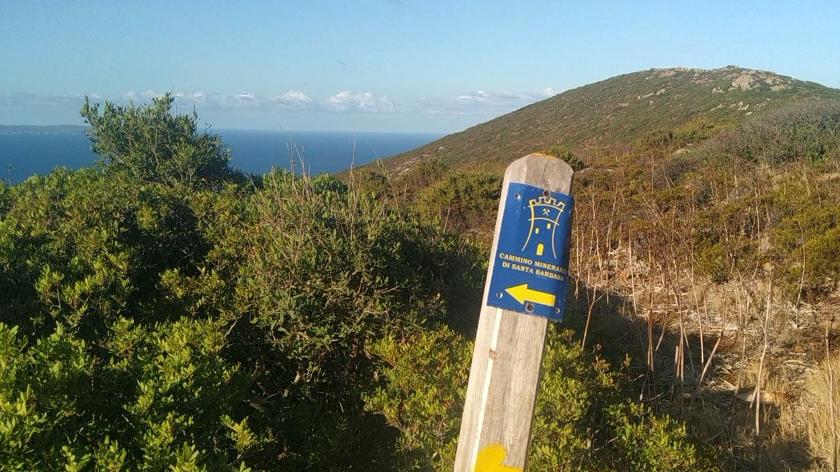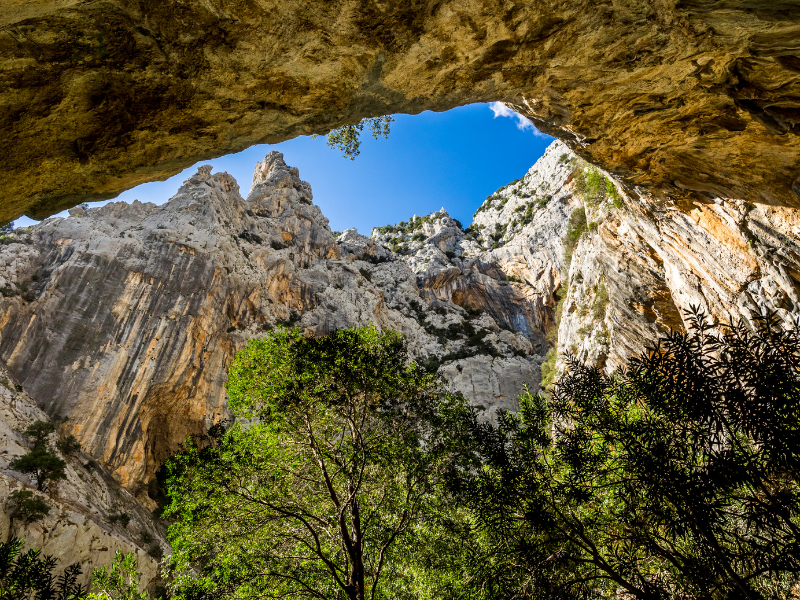The best 5 places in Sardinia for Hiking & Trekking this Autumn
Sardinia is a Mediterranean island and one of the twenty regions of Italy. It is also a place of landscapes, heavenly beaches, mysterious archaeology, and rich culture. In short, it is a place for all tastes and ideal for holidays at any time of year.
If you are a nature lover but dislike hot weather and would like to take a trip this autumn, Sardinia is the place for you, with its fascinating routes and breathtaking landscapes that are beyond man's control. Some routes are simple and well-marked, while others are challenging and require the assistance of a guide.
In this article, you will find five of the most incredible hiking routes in Sardinia.
1. Cammino minerario di Santa Barbara (Santa Barbara mining trail)
The Santa Barbara Mining Trail has been hailed as the most beautiful trail in Italy.
Located in the southwest of the island, the Santa Barbara mining trail is a loop route with departure and arrival in Iglesias (CI). This route, suitable for trekking and cycling, consists of 30 stages of approximately 16km each and covers 500km of natural beauties and cultural history. The hike passes archaeological sites, old mines, small villages, abandoned sites, and churches dedicated to Santa Barbara, the Patron Saint of miners. In fact, the adventure routes retrace the pathways of the miners who transported lead, silver, zinc, and coal extracted from the mines of the Sulcis Iglesiente sub-region in Sardinia.
Some of these mines are open to tourists and can be visited today, such as the Monteponi mine and his Villa Marina tunnel, Porto Flavia, and the Serbariu coal mine and museum (check the page Holiday Ideas to know more).
The route is 75% on pathways, muleteer tracks, and unpaved roads, and 25% on paved roads in urban areas. The itinerary overall is not too demanding and the altitude ranges from sea level to an altitude of 900m in the Marganai mountain system (the altitude changes are only challenging in a few cases). This allows the hiker to walk leisurely while admiring the natural beauty, and breathtaking scenery and visit sites of classical and industrial archaeology.
Before setting off, it is possible to contact the office of the Santa Barbara Walk Foundation for info about the accommodation, and to receive a pilgrim's 'passport'. This document, in addition to personal data, will be stamped at each stage.
Suggestions: Given its length and the number of stages, this route can be tackled several times (e.g. 10 stages at a time).
1. Selvaggio Blu (Wild blue)
The Selvaggio Blu trek is considered the most challenging Italian trek in terms of length and technical difficulty. The location is the wild coastline of the Gulf of Orosei on the east coast of Sardinia in the Baunei region. The trail is around 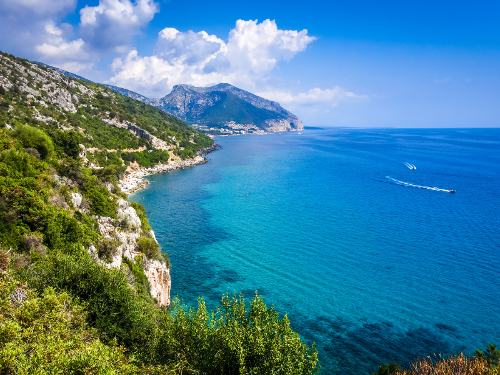 40km long and it takes 5 to 7 days to finish.
40km long and it takes 5 to 7 days to finish.
This journey takes you along the isolated paths used by coal miners who worked in these areas until the 60s, and the routes of goat herders (still active today). These routes are surrounded on one side by the crystal-clear waters of the Mediterranean Sea and on the other by the dense forest of Sardinia, hence the name Selvaggio Blue.
Hiking on these shores is one of the wildest adventures on the island, since, in addition to walking, there is climbing and abseiling. Due to the difficulties, it is not advised to venture out alone, and hiring a local guide is recommended.
If you wish to be surrounded by untamed nature, eat the island's Mediterranean food, and experience the friendly hospitality of the local shepherds, the Selvaggio Blu is the trip to take.
1. Tiscali
If you want an intense experience that lasts only a few hours, get ready to discover the historic and ancient Nuragic town of Tiscali. This is located on Mount Tiscali, a small mountain 518m above sea level on the border between the Supramonte of Oliena and the Supramonte of Dorgali in the sub-province of Nuoro in central-eastern Sardinia.
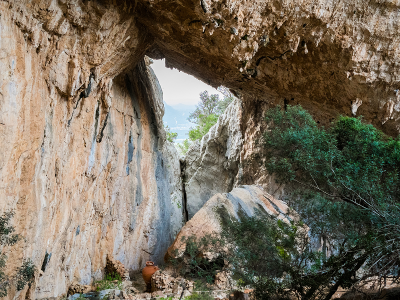 On the summit of the mountain is an enormous karst sinkhole within which are the remains of the village, built during the Nuragic Age.
On the summit of the mountain is an enormous karst sinkhole within which are the remains of the village, built during the Nuragic Age.
Cataloged as a half-day route thanks to its 10.5km, Tiscali is not just an adventure in nature. This journey will also take you to the magnificent archaeological world of Sardinia. You will start your trip across the Sa Barva Bridge, crossing through a karstic desert until you reach the ancient settlement of Tiscali.
But remember: Tiscali is a hike for the most experienced. The environment is quite wild and as of today, the route is not marked. So, make sure you train for this adventure and do not forget to hire a guide to make your trip safer.
Fun fact: Tiscali's name became famous thanks to the entrepreneur Renato Soru, who named his telephone company after it.
1. Foresta Demaniale dei Sette Fratelli
The Foresta Demaniale Dei Sette Fratelli is a beautifully preserved green lung of almost 10 thousand hectares, ideal for landscape and hiking enthusiasts, located in the Sarrabus sub-region in south-eastern Sardinia.
Thanks to the many routes this forest offers, as well as being suitable for trekking, it is also a popular location for cyclists. Inside the forest, you can also find the wonders of the island's wildlife. Within clusters of trees live a wide 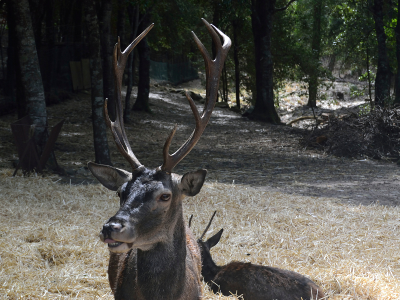 variety of species such as eagles, hares, wild boars, and the native Sardinian deer.
variety of species such as eagles, hares, wild boars, and the native Sardinian deer.
And let's not forget that this national park has other attractions such as a museum dedicated to the Sardinian deer and a botanical garden that is also accessible to the visually impaired. In fact, the path is equipped with a rope handrail that leads to the crossing of the Maidopis river via a small bridge that is accessible to all visitors, and where once crossed, it is possible to rest in the shade of holm oaks.
If you are interested in the island's archaeological sites, you can hike to the forest heart where you will find the Tomb of the Giants named Is Concias and the Nuragic ruins of Sa Fraigada.
Note: A visitor centre is available to walkers, where it is possible to receive some information for a correct and safe enjoyment of the area. For info: https://www.sardegnaforeste.it/complesso-forestale/settefratelli
1. Gola Su Gorropu
If you are interested in the island's natural heritage, you cannot miss the Gorropu canyon.
Located between Barbagia and Ogliastra, this gorge divides the mountains of Orgosolo and Urzulei in half, creating a canyon formed by limestone walls up to 500m high. Trekking and descending through the canyon gorges are some of the most popular activities in Sardinia.
Many consider Gorropu to be the Grand Canyon of Europe because it has a km and a half of green trails, places to climb, and wild environments for the more adventurous, so if you want to risk more, don't forget to take your harness and special equipment to launch yourself on the more extreme routes.
Note: the 2 main routes are signposted, and you can receive safety instructions from the experts on-site for a hassle-free experience. For info: https://gorropu.info/en/
So, if you are looking for a perfect tour for your autumn holidays, do not doubt that the island of Sardinia is the ideal destination.
In autumn, the weather conditions can be the most favorable for the whole family in Sardinia, so take advantage of this year's season to embark on an adventure on this island.
There are endless activities on the island, suitable for all ages and levels of difficulty. You will have extreme activities for the most intense adventurers to walks along the beautiful Mediterranean coasts for those looking for a day of relaxation (check our holiday ideas).
Remember: If you plan to go on a challenging hike, remember to have a good map with you (maybe offline, because in some areas there is no phone coverage), enough food, and water to be well prepared for walking for km away from the refreshment points.
What to bring: Hiking shoes (compulsory and possibly used often to avoid the risk of the soles breaking, avoid shoes that have not been used for years); rucksack (no shoulder bags or bags that impede movement); packed lunch and water; sun hat; sweatshirt or jacket.
Are you curious to know more about Sardinia?
Check our tour templates
Check our Holiday ideas page
and contact us for a customised tour!


